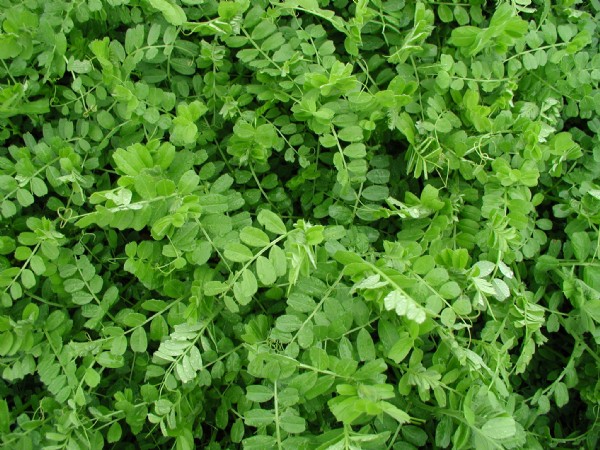

Autumn sown cover crops or green manures are increasingly being grown on conventional and organic farms to improve soil fertility instead of leaving bare fallow over the winter months.
Ian Wilkinson explains why it’s worth bothering and why winter vetches are probably the best autumn sown fertility builder available.
Why bother?
On face value it may seem ludicrous to grow a crop which is ploughed back into the soil without harvesting it. But many farmers are doing just that. The traditional winter fallow may be an easy option but it offers little other than the prospect of a good frost mould and the loss of nitrates through leaching. A successful cover crop on the other hand will act as a nitrate bridge, enabling soil nitrogen to be held back and made available for the next crop. Additionally, a cover crop will smother germinating weeds and can be expected to improve soil structure and increase humus levels, the latter being of particular benefit to light droughty soils, as it will increase the soils capacity to hold moisture. Grow a legume such as winter vetch (Vicia sativa) and you’ll also get plenty of free nitrogen fixation to boot. One other benefit of cover cropping is that soil borne pests, particularly those associated with cereals and grasses have their life cycles disrupted and are generally less troublesome in subsequent crops.
The ideal winter green manure
A winter cover crop will be successful if it is cold tolerant, early to grow in the spring and highly productive. It will have greater appeal if it can be sown late in the autumn and even more if it’s a legume. Winter vetch meets all these criteria.
Sowing and management
The seed of vetch is similar to a small pea and is sown between 25 and 50 kg per acre (62-125 kg per hectare) with the higher rate being used where weed suppression is the main criteria. There are imported varieties of vetch but the preferred strain for autumn use is Early English which is winter hardy. It will grow on most soils and is sown with a corn drill at a depth of 30mm. Vetch is a low input crop and requires no nitrogen fertiliser or herbicides. It has a requirement for phosphate and potash. P and K levels should be assessed prior to sowing and both should be above a soil index of 1. The crop is usually sown during September and through until late October. This will often allow time for a false seedbed to be made allowing some weed germination, which can be particularly useful after cereals. Earlier sowings in August can be vulnerable to pigeon damage but providing the damage is not too severe the crop usually grows away in spring. Vetches are high in protein and low in fibre so the green matter they produce is easy to plough under in the spring; Ploughing is usually carried out two weeks before planting a spring sown crop. Livestock farmers may wish to use vetches for forage. They can be grazed or silaged.
The economics
The profitability of a cover crop is difficult to quantify specifically. Many of the benefits are intangible. Looking at experience in the USA, where cover cropping is widely practised, savings have been made on purchased nitrogen. In the region of 70-100 kg N per hectare is typical. Whilst there has been little scientific work carried out in the UK it would be reasonable to assume similar savings here. Depending on the cost per acre, it is likely that a financial breakeven would be the result. Then add on the soil improvement factors, weed suppression and the environmental benefits there should be a good case to consider the winter cover crop option. A mixture of vetches with Westerwolds ryegrass is likely to be more economic today costing £1.81 per kg. A return can be obtained from taking a cut for silage before ploughing in.
Forage Matters Autumn 2000 (Amended 2009)
By Ian Wilkinson of Cotswold Seeds
Date Posted: 29th March 2017




